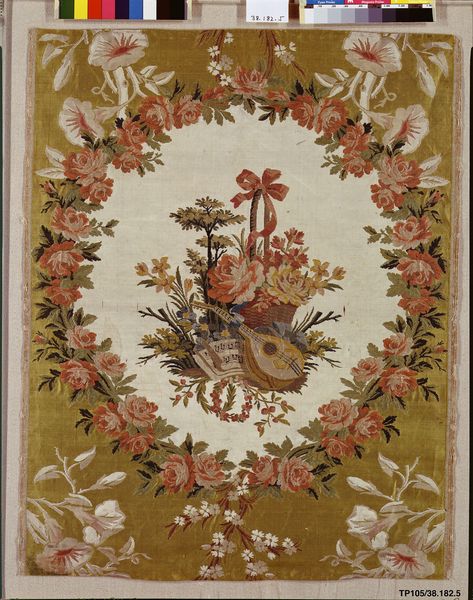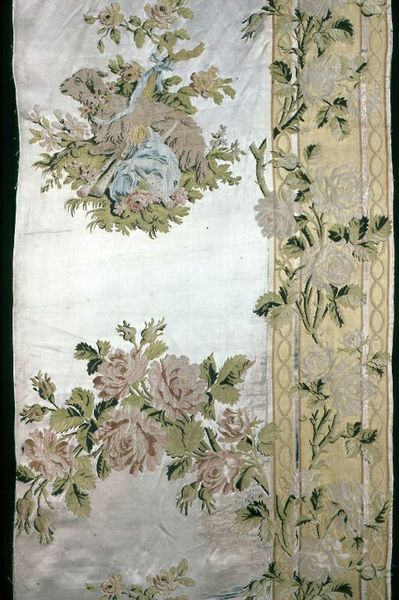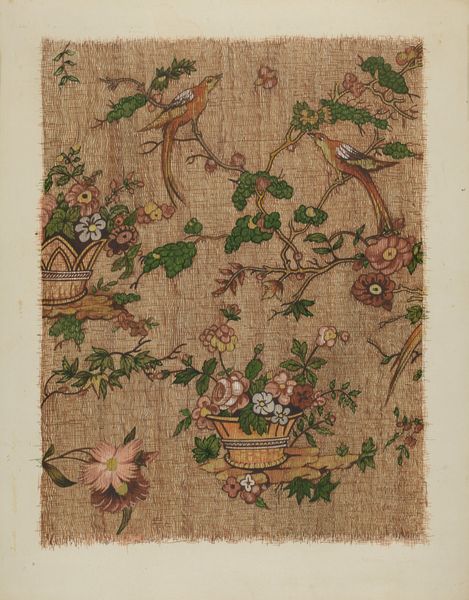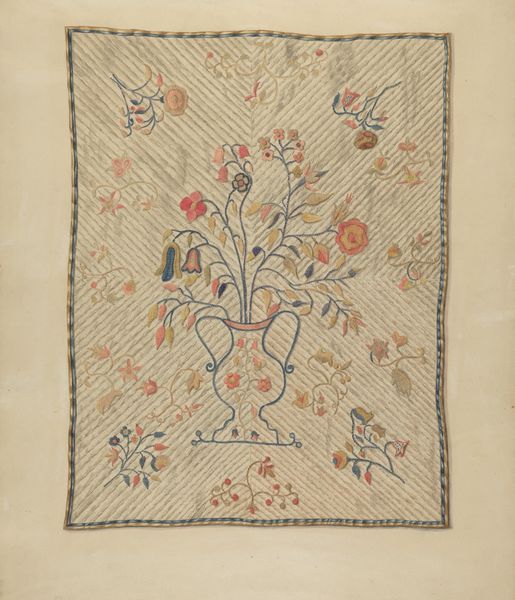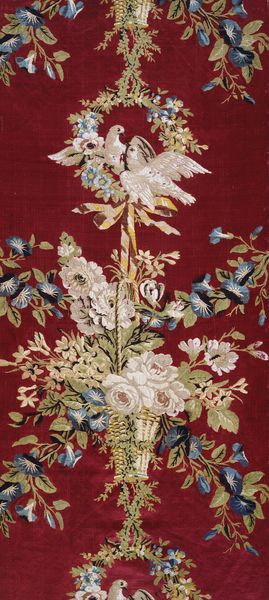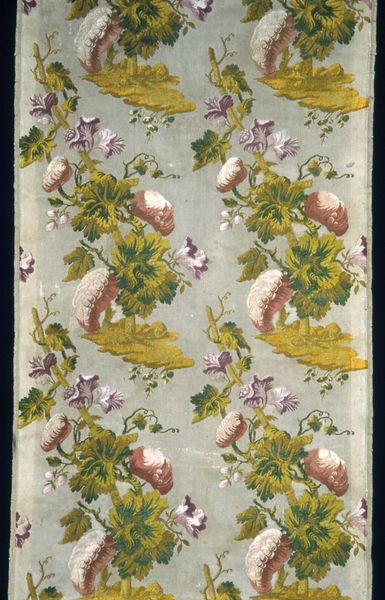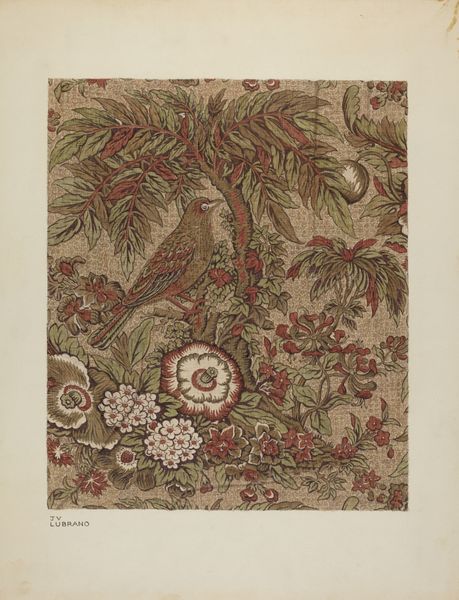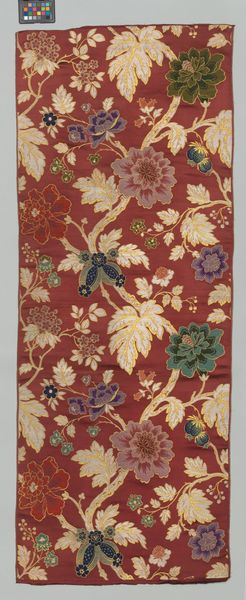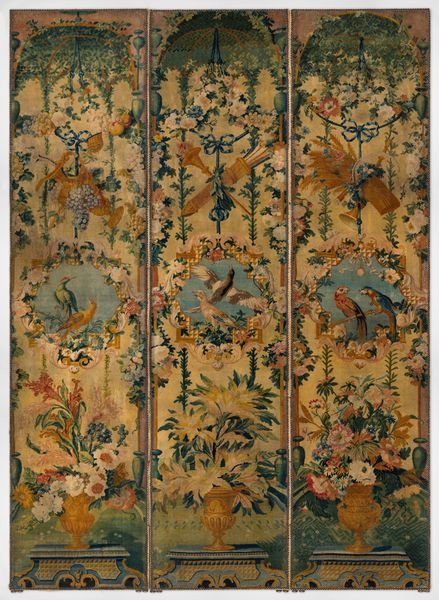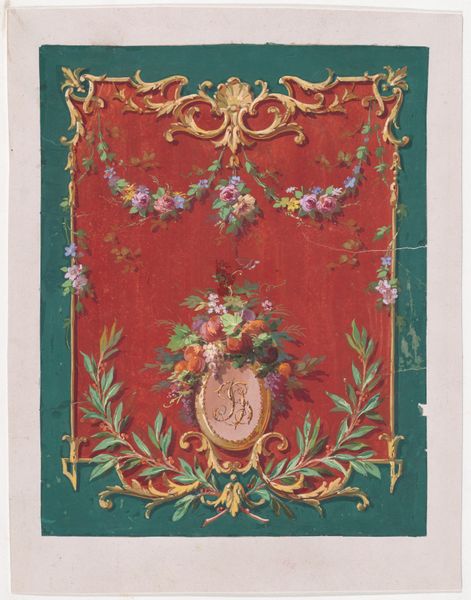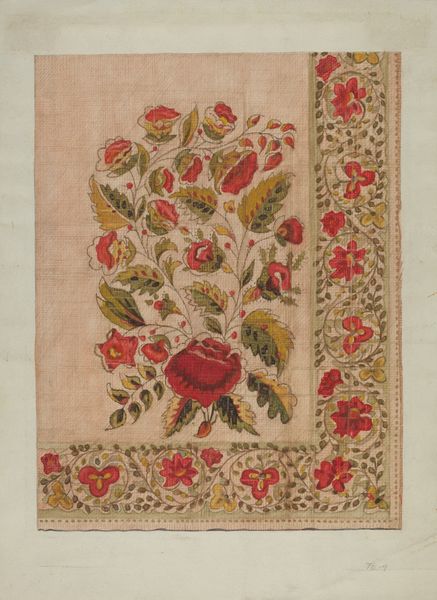
Dimensions: height 190.8 cm, width 55 cm, height 86 cm, width 53 cm
Copyright: Rijks Museum: Open Domain
Curator: Here we have "Wandbespanning van lampas met tortelduivenpatroon", a lampas wall hanging with a turtledove pattern by Philippe de Lasalle, dating from around 1770 to 1790. What strikes you first about this textile, especially considering its age? Editor: It's the opulence, definitely. The floral arrangements and doves create a romantic, almost extravagant scene. But it's a textile...a wall hanging. I wonder how its function and materials affect its meaning. How do you interpret this work, considering it’s not a painting or sculpture? Curator: Exactly! Let's consider the process and materials. Lampas weaving was incredibly labor-intensive, demanding highly skilled artisans. The silk itself, often imported, spoke to wealth and global trade. It shifts our perspective, doesn't it? Editor: So, this isn't just decoration, it’s a display of economic power and skilled labor? The pattern, though seemingly delicate, is tied to industry. Curator: Precisely. And who was consuming this textile? Consider the Rococo style: frivolous, ornate. These textiles weren’t for the masses; they were commissioned for wealthy elites, reinforcing social hierarchies. Do you see the socio-political context embedded within the weaving? Editor: Absolutely. It changes how I see it. It is a wall hanging and part of interior design but also a document of material production. How can an object like this challenge art world conceptions of the time? Curator: It challenges that binary. Where does 'art' end and 'craft' begin? A piece like this, demanding artistry in design and production, blurs those lines, compelling us to re-evaluate how we assign value and status to different forms of making. Editor: This piece is so much more than just a pretty pattern. Now I see a history of labor, materials, and social power woven into its very fabric. Curator: Indeed, examining the materials and mode of production brings a new understanding to art.
Comments
No comments
Be the first to comment and join the conversation on the ultimate creative platform.
